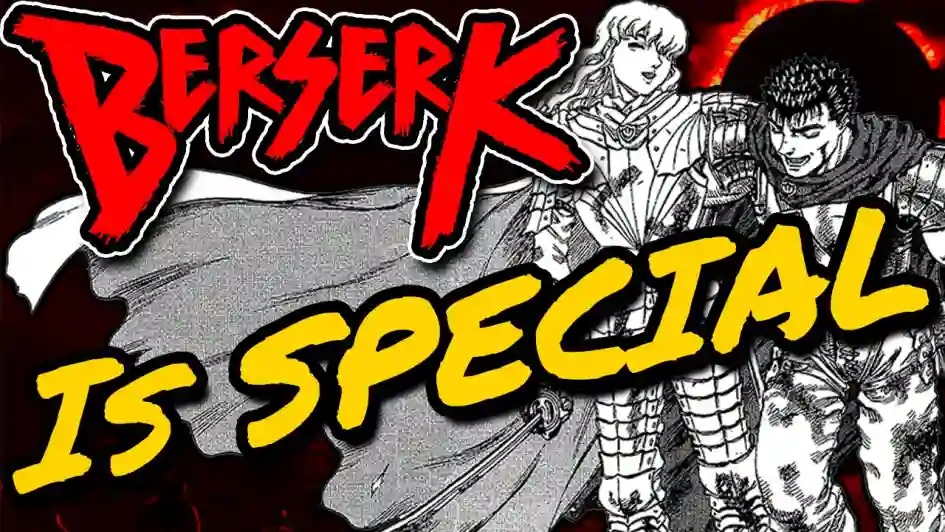Kentaro Miura’s dark fantasy manga masterpiece, “Berserk,” has left an indelible mark on not only the world of manga and anime but also the broader landscape of pop culture and media. For over three decades, this epic tale of ambition, betrayal, and relentless struggle has captivated audiences and inspired countless creators. In this article, we will explore the profound influence of “Berserk” on various facets of pop culture, from video games and music to literature and film.
The Birth of Dark Fantasy
Before the advent of “Berserk,” dark fantasy as a genre was relatively underrepresented in manga and anime. Kentaro Miura’s creation marked a shift in the genre’s landscape, introducing a darker, grittier, and more mature approach to storytelling.
“Berserk” presented a world where humanity’s struggle against supernatural forces was wrought with brutality, moral ambiguity, and philosophical depth. The series explored complex themes such as the corrupting nature of power, the consequences of ambition, and the fragility of the human spirit, setting a new standard for dark fantasy storytelling.
This shift in tone and narrative complexity served as a catalyst for the resurgence of dark fantasy in both manga and anime. Creators across various mediums began to embrace the darker and more mature themes that “Berserk” had introduced, leading to a proliferation of dark fantasy works in pop culture.
Video Games: A Dark Fantasy Playground
One of the most notable ways “Berserk” has left its mark on pop culture is through its influence on the world of video games. The series’ dark and violent themes, as well as its richly developed world, have inspired numerous video games that draw directly from the “Berserk” universe.
The “Dark Souls” series, created by FromSoftware, is a prime example of a video game franchise heavily influenced by “Berserk.” The series borrows not only thematic elements but also visual design cues, with armor and weapons reminiscent of those found in “Berserk.” The bleak and foreboding atmosphere of “Dark Souls” echoes the oppressive and nightmarish world of Miura’s creation.
Another game that wears its “Berserk” influence proudly is “Bloodborne,” also developed by FromSoftware. “Bloodborne” shares the same dark and gothic aesthetic as “Berserk” and explores themes of cosmic horror, transcendence, and the consequences of ambition. The game’s protagonist wields a weapon known as the Hunter’s Axe, which bears a striking resemblance to Guts’ Dragon Slayer sword.
Additionally, the “Berserk” manga has been adapted into video games, allowing players to step into the shoes of Guts and experience his relentless journey firsthand. These games, such as “Sword of the Berserk: Guts’ Rage” and “Berserk and the Band of the Hawk,” allow fans to immerse themselves in the world of “Berserk” and engage in epic battles against grotesque monsters and formidable foes.
Music: From Melodic References to Tributes
The influence of “Berserk” extends to the realm of music as well, where various bands and musicians have paid homage to the series through their work. Whether it be through subtle references or overt tributes, “Berserk” has left its mark on the musical landscape.
Notable bands like the progressive metal group “Dream Theater” have incorporated “Berserk” references into their music. Their album “Images and Words” features a track titled “The Killing Hand,” which includes lyrics referencing the “Berserk” character Guts.
In the world of Japanese visual kei and rock music, the influence of “Berserk” can be seen in the works of artists like “BUCK-TICK.” Their song “Gessekai” (“Moon World”) draws lyrical inspiration from the series and its themes of darkness and transcendence.
Additionally, “Susumu Hirasawa,” the composer behind the music for the 1997 “Berserk” anime adaptation, has created a distinctive and haunting soundtrack that has become synonymous with the series. Hirasawa’s ethereal and evocative compositions perfectly capture the eerie and atmospheric quality of “Berserk’s” world.
Literature and Comics: A Source of Inspiration
The impact of “Berserk” extends beyond manga and anime into the world of literature and comics. Many creators have been inspired by the series’ narrative complexity, character development, and thematic depth.
Prominent authors like “George R.R. Martin,” known for the “A Song of Ice and Fire” series, have acknowledged the influence of “Berserk” on their own works. Martin has praised Miura’s storytelling and has drawn inspiration from the moral ambiguity and complex characters found in “Berserk.”
The American comic book industry has also been influenced by “Berserk.” Creators like “Frank Miller,” renowned for his work on “Sin City” and “The Dark Knight Returns,” have cited “Berserk” as an inspiration for their own dark and gritty storytelling.
Visual and Cinematic Impact
The visual impact of “Berserk” on pop culture is unmistakable. The series’ intricate and detailed artwork, as well as its visceral and graphic depictions of violence, have set a new standard for visual storytelling in manga and beyond.
The iconic design of Guts, with his massive sword, imposing physique, and distinctive prosthetic arm, has become instantly recognizable in the world of manga and anime. The Dragon Slayer sword, wielded by Guts, has also become an iconic weapon that has left a lasting impression on pop culture.
The influence of “Berserk” can be seen in various forms of media, from films like “300” to the design of characters and monsters in video games like “Dark Souls” and “Bloodborne.” The grim and gothic aesthetic of “Berserk” has been adopted by creators seeking to evoke a sense of dark and atmospheric storytelling.
Adaptations and Spin-Offs
“Berserk” has not only inspired creators but has also seen its own share of adaptations and spin-offs in various forms of media. While some adaptations have been met with mixed receptions, they have further cemented the series’ presence in pop culture.
The 1997 “Berserk” anime adaptation, although covering only a portion of the manga’s narrative, introduced the series to a wider international audience and garnered a dedicated fanbase. It remains a cult classic among anime enthusiasts.
In recent years, the series has seen the release of a trilogy of animated films that cover the events of the Golden Age Arc. While these adaptations aim to capture the essence of the manga, they also introduce the story to new viewers and fans.
Conclusion
“Berserk” is more than just a manga; it is a cultural phenomenon that has left an enduring imprint on pop culture and media. Its influence can be felt in video games, music, literature, and comics, as well as in the visual and cinematic realm. The series’ dark and complex themes, intricate character development, and richly detailed world have inspired countless creators and captivated audiences worldwide.
As Kentaro Miura’s magnum opus continues to shape the landscape of storytelling, its legacy lives on, reminding us of the enduring power of narrative depth, thematic complexity, and the dark and unrelenting world of “Berserk.”


